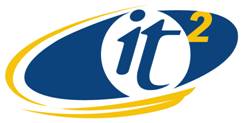|
|
|
|
|
|
|
Topic1: Bandwidth Aggregation
Topic2: Public-area Wireless
Networks
Topic3: Video Compression
Topic4: Routing, Scheduling
and Power Control
Topic5: Content Shaping &
energy consumption modeling
In recent years, explosive growth
of the Internet has been a major driving force
in the deployment of a variety of wireless technologies.
Examples include GPRS, EDGE, CDMA2000, HDR, UMTS.
While wireless technologies traditionally were
designed to offer circuit-switched voice services,
efforts are now underway to integrate mobile radio
networks with the Internet to support a rich variety
of data applications. Thus far, the focus has
been on using only a single wireless interface
at a time, and several research challenges related
to such use have been explored. Given the scarcity
of bandwidth in wireless domain, it’s often
the case that no single interface can support
data intensive applications like video telephony/conference,
telemedicine, and large file transfers. Even though
the 3G radio access technology UMTS is touted
to provide up to 2Mbps, this is
under the best of conditions, where the channel
is dedicated to a single user and the user has
excellent radio conditions. In practice, the user
is likely to get only a few hundred kbps. This
is inadequate - even a low quality 64kbps rate
controlled Variable Bit Rate (VBR) interactive
video, due to a huge difference between peak to
mean rates (about 15), needs at least 300kbps
capacity to achieve adequate quality reception.
Restricting wireless technology use to support
only a subset of applications that require low
bandwidths less appealing and difficult for operators
to gain returns on the huge investments made in
acquiring license to spectrum. However, when coverage
areas of the different wireless technologies overlap,
there is no need to restrict oneself to a single
interface. The simultaneous use of multiple interfaces
permits bandwidth aggregation, thereby allowing
support for demanding
applications that need high bandwidths. Further,
this can have additional advantages for some applications
in terms of increasing reliability, where some
or all packets can be duplicated and sent on the
multiple interfaces. Also, it can help in mobility
management, where the delay associated with handoff
can be significantly reduced when an alternate
communication path exists.
|
